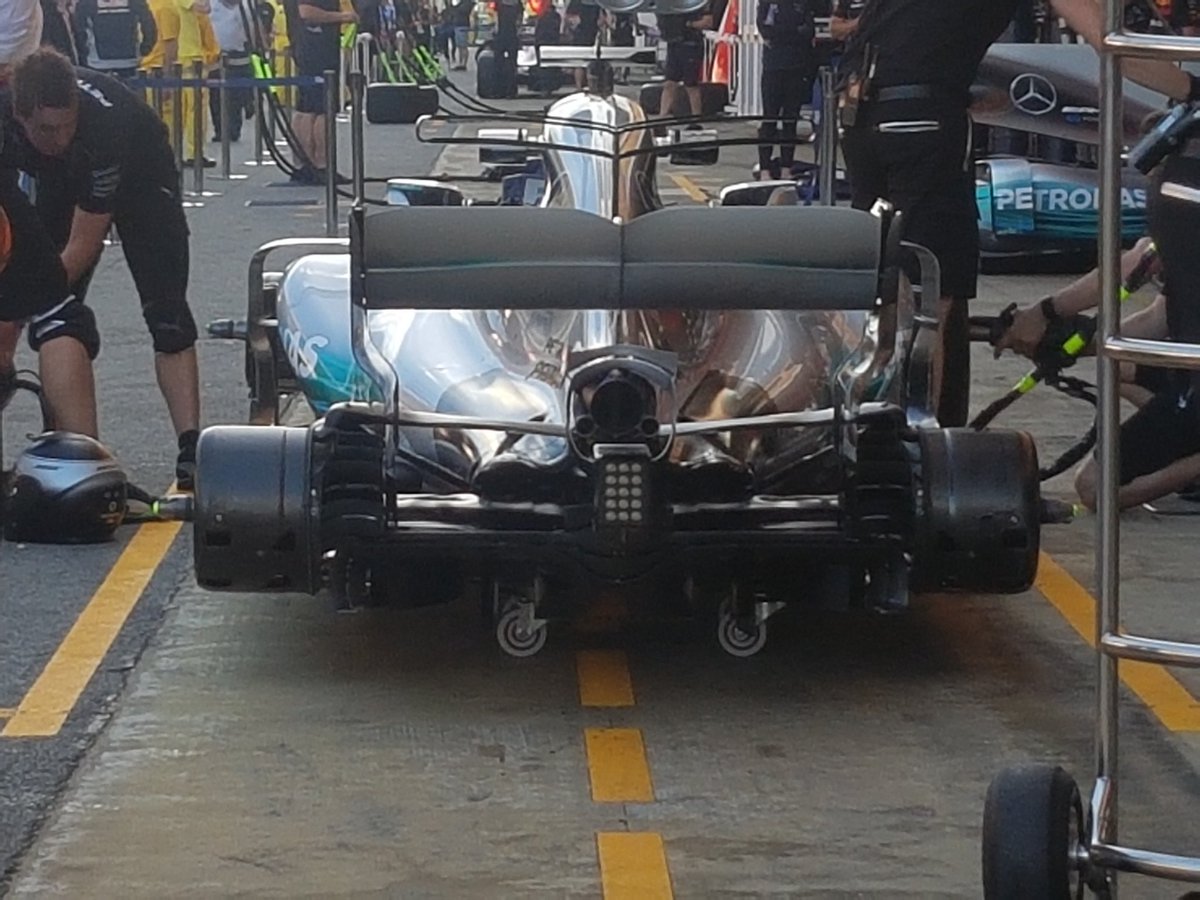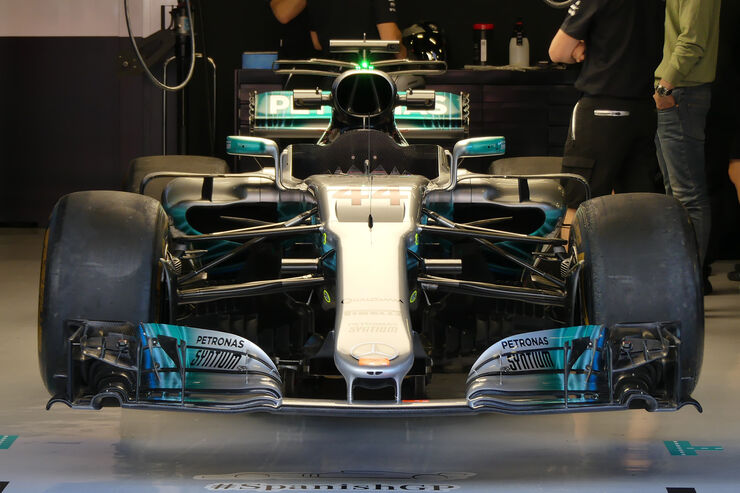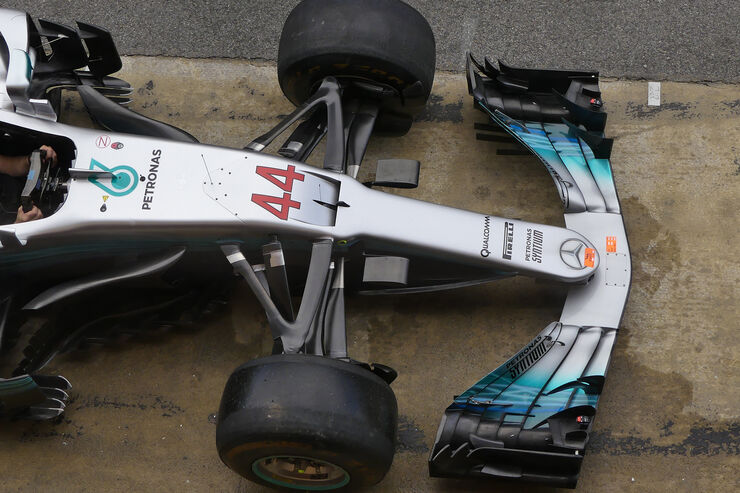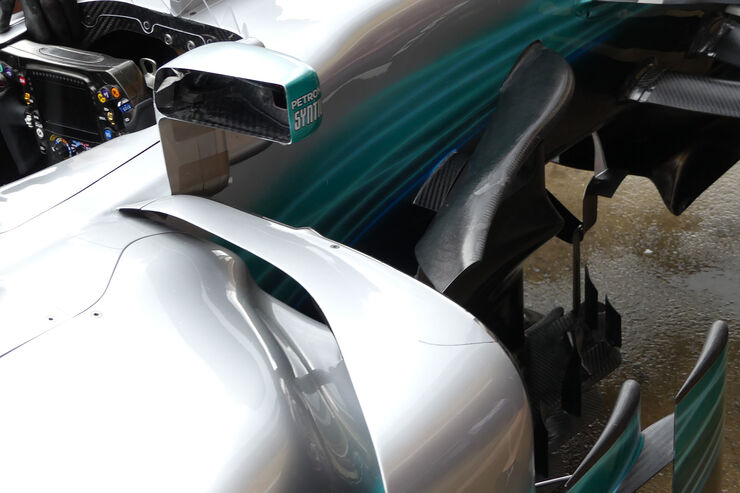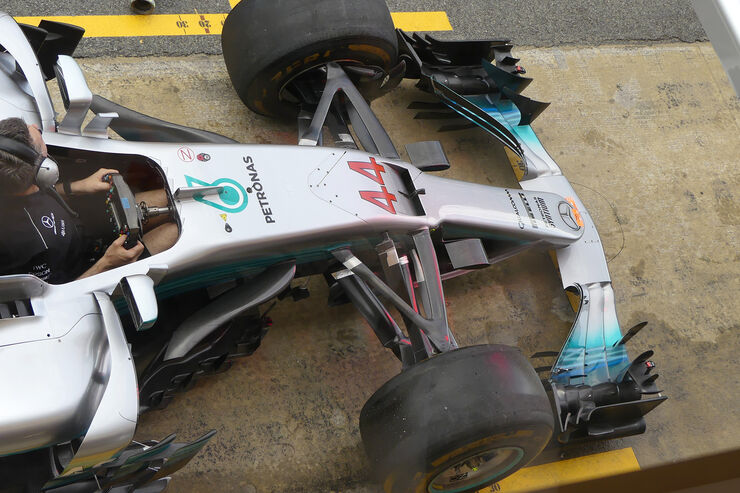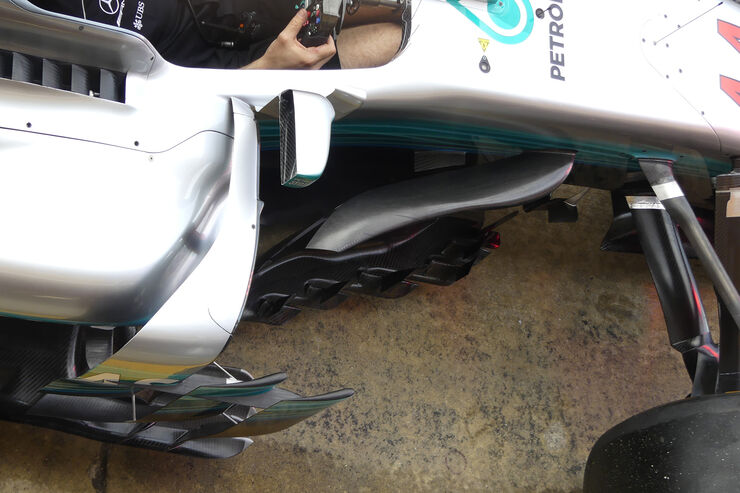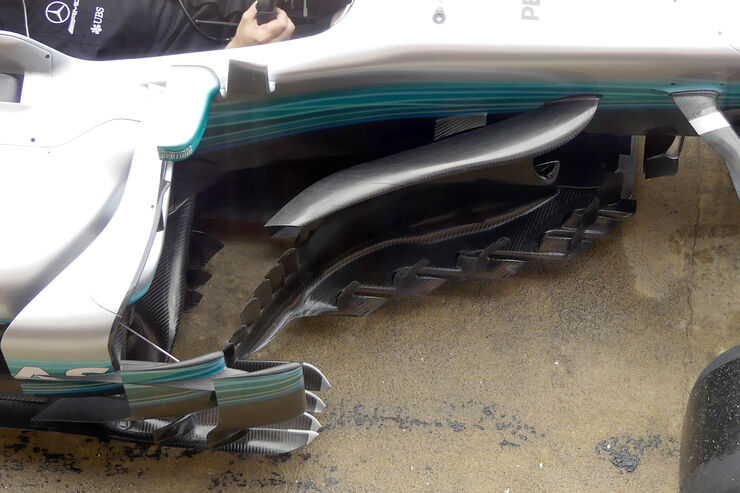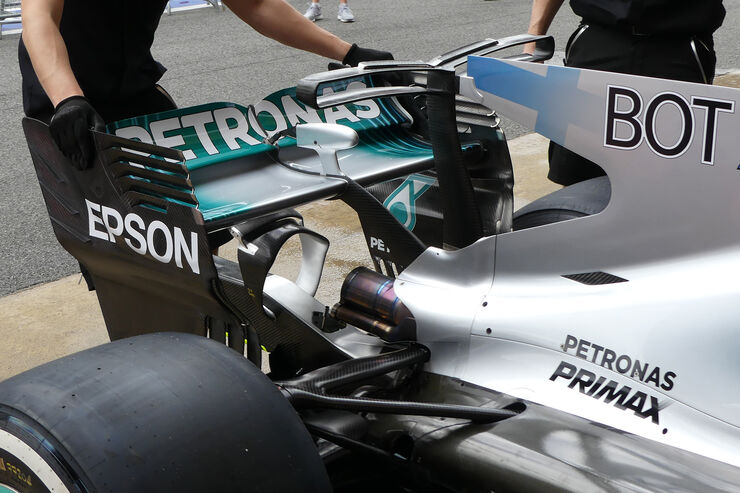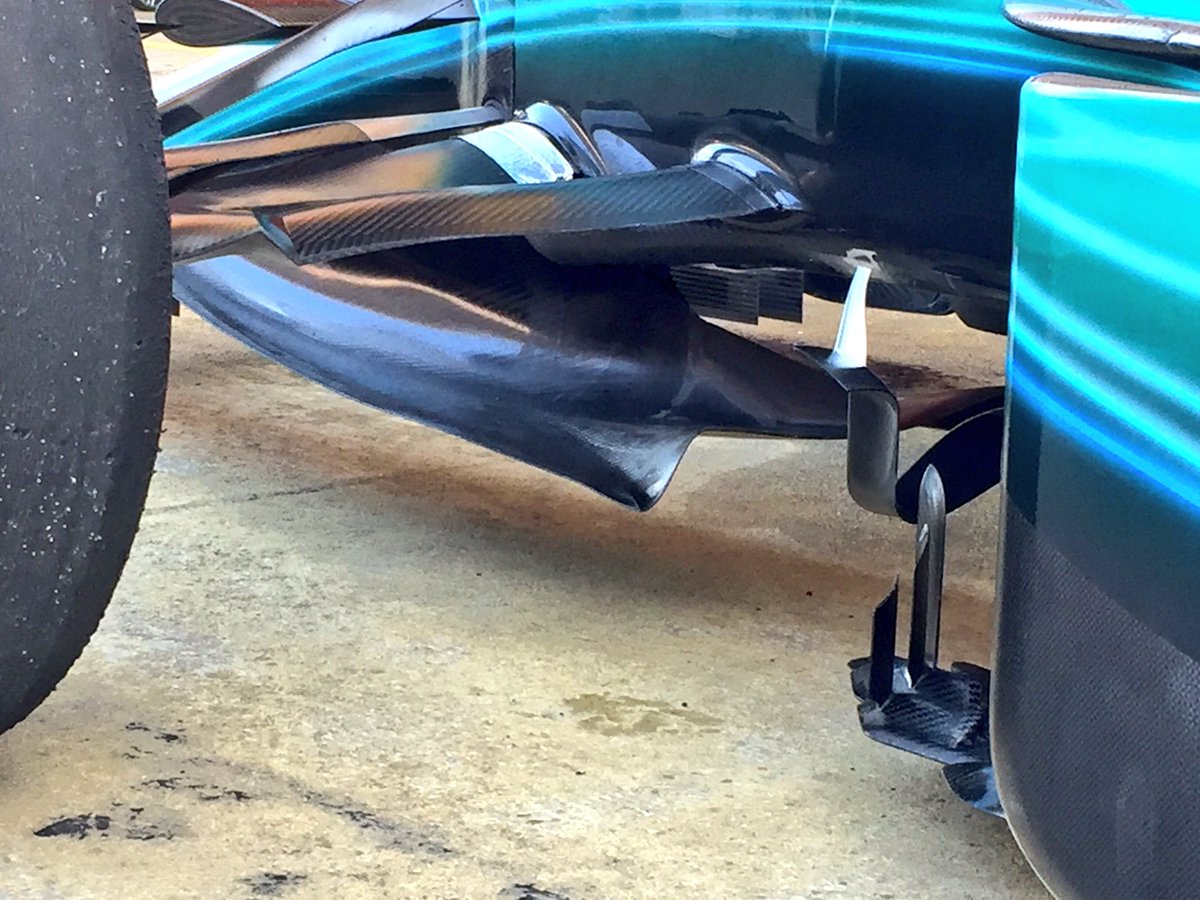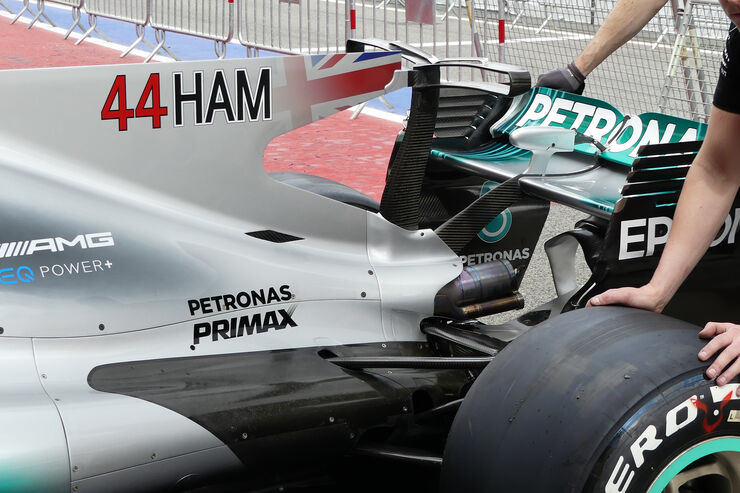Just_a_fan wrote: ↑11 May 2017, 19:12
F1Krof wrote: ↑11 May 2017, 15:59
Just_a_fan wrote: ↑11 May 2017, 15:55
Have they created a diffuser under the nose with the strake? In from of the t-tray it looks like a raised section that mimics the rear diffuser. If so, they just bolted on a shed-load of downforce!
Nahh, the area is rather too small for it have such a significant impact as a diffusor, the airflow will probably spill too much sideways under yaw, they are using to channel as much clean airflow to the back of the car.
No doubt they are using it to set up flow structures going towards the front of the floor / the rear of the car. But if we look at the strake, it is raised at the front. This will roll up a vortex that runs along the length of the strake and is presumably aimed at the bargeboard "forest". The underside of the strake becomes a large diffuser-shaped structure just in front of the t-tray. The shape of the strake under the nose appears to mimic the previous turning vanes that lived there - it curves in toward the centre line before turning outwards. Behind this, the floor of the strake raises in to the "diffuser".
We know that the old turning vanes created downforce in their own right as well as setting up an increase in downforce from the floor, particularly the leading edge of the floor. This strake/diffuser will do the same thing but presumably to better effect. The shaped section will be driven by the diffuser so increasing downforce below the tub, the floor will benefit from the vortices created by the strake. If it works in this way, it would appear to be a powerful device.
I wonder if one of the reasons for this device, aside from the eternal hunt for more downforce, is to help the car run in dirty air. I guess we'll find out soon enough.
Yes the shape is upwardly curved, but it doesn't mean it's effect is to manipulate the pressure underneath it primarily. You're assuming the shape of the airflow to be horizontally straight, with the conclusion the primary function is to create the diffusor effect. However, the airflow is rather curved. Much like the shape itself, and the reason why it is upwardly curved is to 'catch' the flow from the above and downardly through its spine to direct the airflow to the turning wanes and to the rear of the car. I do believe from the looks of it this to be the primary role.
To work efficiently as a mini diffusor it would need a rather flatter form with more linear angle, the wing is rather complex. Also with its area being so little, there wouldn't be any significant pressure differentiation, and the outdriven low pressure air coming from underneath wouldn't be energized, the velocity wouldn't significantly increase. Also the air would spill sidways, which is a big problem because it would create unnecessary drag.
So, it seems like an evolution of the batwing and the t-tray. More like a mix of two.


